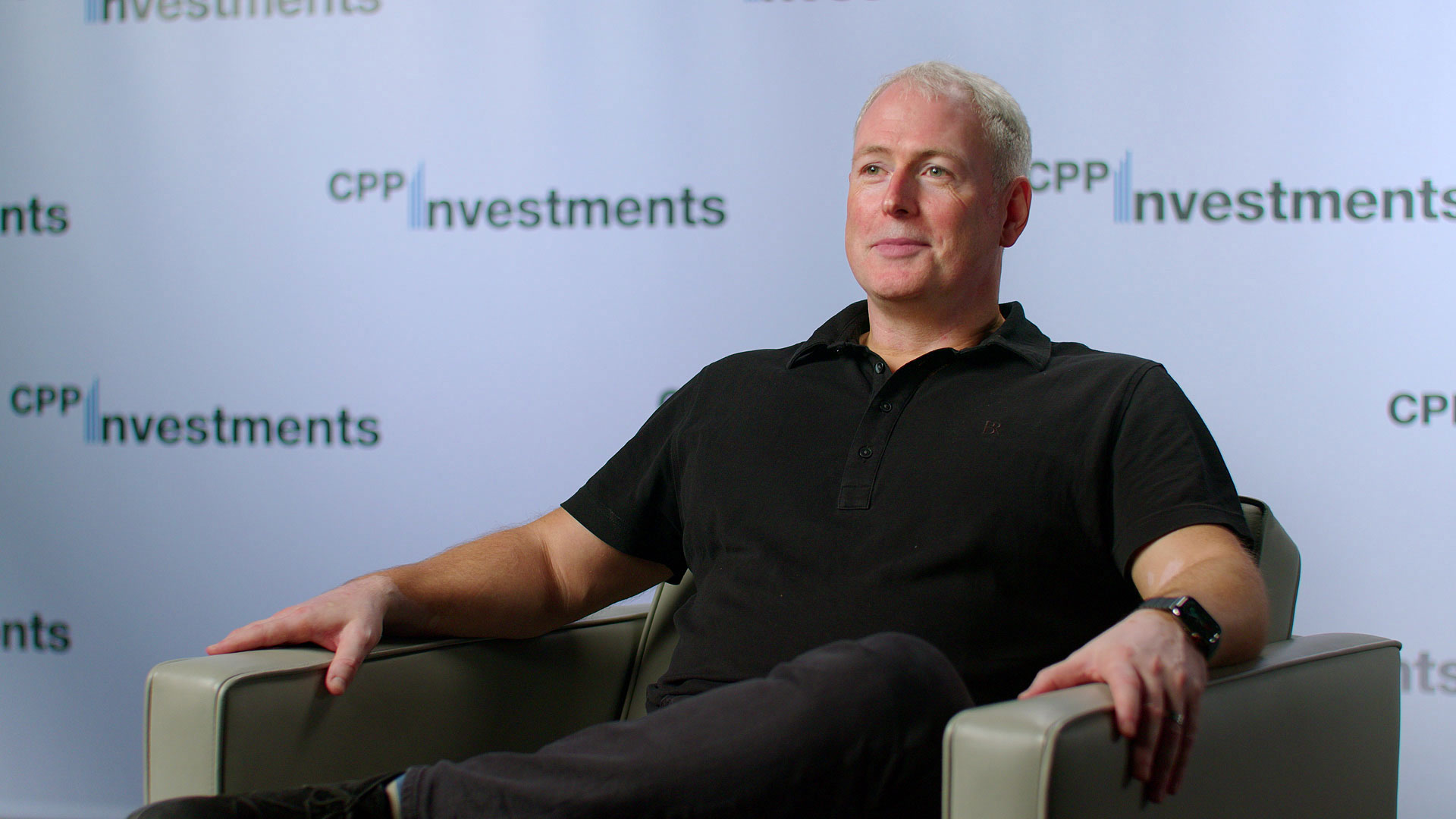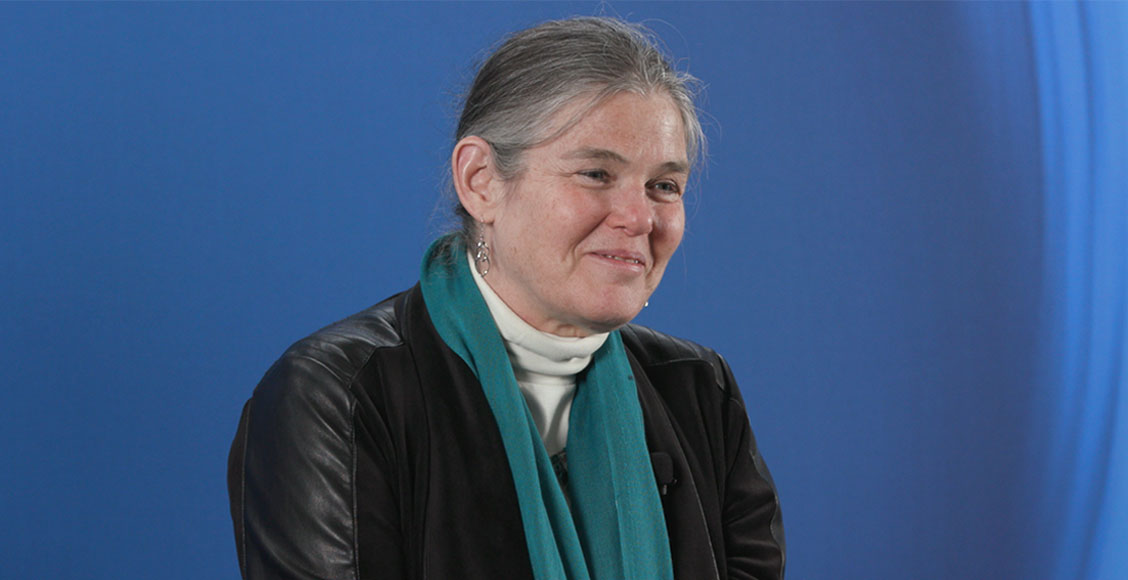It’s a tricky balancing act: rapidly decarbonizing the global energy supply while ensuring access to affordable and secure energy for everyone. Achieving it will depend on the integration of a variety of technologies, including hydroelectric, wind, solar, geothermal and hydrogen power. Conventional energy providers also have an important role to play.
This challenge is at the heart of CPP Investments’ Sustainable Energies Group CEO Summit. Now in its second year, the event brings executives from CPP Investments’ Sustainable Energies group portfolio companies together with energy sector specialists to connect, learn from each other and take stock of the key challenges and opportunities of the global energy transition. CPP Investments’ Sustainable Energies group is a C$33-billion active investing portfolio of companies from around the world, developing renewable energy projects as well as conventional power, upstream oil & gas, energy midstream, and carbon capture projects.
Held in Alberta in early October, this year’s event saw CEOs, investors and experts discuss the major forces shaping the industry.
Here are five key trends highlighted during the summit:
Addressing greater electrification demand with interconnected grids
Electricity is poised to play a major role in the global energy mix by 2050, driven by new demand from smart buildings, data centres, electric mobility, the electrification of industrial sectors and developing economies. McKinsey projects that electricity will represent at least 32 per cent of global energy consumption in the slowest decarbonization scenario, 38 per cent in a “continued momentum” scenario and 47 per cent in the most aggressive transition.
Addressing that need with additional grid capacity is a pressing challenge for industry and governments—though India and a nascent initiative in some U.S. states suggest a way forward.
Power demand in India has grown by 7 to 8 per cent annually for the last several years and is expected to continue on that trajectory for at least the next two decades. The country has a single interconnected grid that allows power to be transferred from one part of the country to another. Renewables are given preferential access, with neither the user nor the supplier needing to pay for access. Though renewables currently represent just 15 per cent of the grid, the country has set a target of between 80 and 85 per cent within the next 20 years.
In the U.S., the North Plains Connector project will connect the U.S. eastern and western electric grids in Montana and North Dakota, unlocking 3,000 megawatts of transfer capacity. The project is entering the permitting phase, with approvals expected in 2026. The line is expected to be operational by 2032.
Protectionism on the rise as countries seek to secure their energy sources
The Russia-Ukraine war and China’s dominance in numerous energy transition-related supply chains — from critical minerals to electric vehicle batteries — are driving a resurgence in industrial policy in western countries to address energy security and thread critical supply chains through likeminded jurisdictions.
The summit occurred against the backdrop of various jurisdictions around the world, including the United States, introducing tariffs on electric vehicles from China. Attendees noted that while policies such as the United States’ Inflation Reduction Act, Canada’s critical minerals strategy, and Europe’s Green Deal provide important incentives for businesses, the rise in global protectionist trade policies has the potential to make economies less efficient and could hinder progress in the energy transition.
Meanwhile, surging power demand in India, and African and Southeast Asian countries and a reluctance by those countries to have their energy policy dictated by north Atlantic countries, could lead to a very different geopolitical landscape, energy experts posited.
Artificial intelligence, data centres will represent a significant share of power demand
As organizations across all industries accelerate digitalization efforts, the wide-scale adoption of AI technologies, major gains in computing capabilities, and broader digitalization and cloud migration trends are driving up demand for data centres.
Artificial intelligence and data centres will represent a significant share of future power demand, making this sector a microcosm of the broader energy transition. A rush is underway to develop new centres, with hyper-scalers like Microsoft Corp. signing deals to develop their own.
CPP Investments currently has data centre joint ventures and investments in key hubs across the Asia Pacific region, including Australia, Hong Kong, Japan, Korea, Malaysia, and Singapore, as well as the U.S. Delivering against these needs is a critical example of how many companies and investors are working to meet growing energy demands as cleanly as possible.
“CPP Investments has invested in the Asia Pacific data centre sector for several years, and we have witnessed significant growth in this space, fueled by a strong demand for digital infrastructure and, more recently, the increasing adoption of artificial intelligence. We have built up strong sector expertise and are excited about the opportunities presented by data centres globally,” said Max Biagosch, Senior Managing Director, Global Head of Real Assets & Head of Europe for CPP Investments. The power needs of these data centres are substantial and growing rapidly.
CPP Investments also recently inked a deal with Equinix, the largest hyper scale data business in Australia and Asia. “That will hopefully get us between one and a half gigawatts of capacity in probably four different campuses in the United States,” said James Bryce, managing director and head of infrastructure at CPP, during the summit.
Attendees are exploring energy solutions for this emerging demand centre including natural gas, nuclear, renewables, and carbon offsets to power this transition.
According to McKinsey data presented at the event, the power requirements of U.S. data centres are expected to nearly triple by the end of the decade to between 11 and 12 per cent of total annual power demand, up from three to four per cent currently. Meeting future demand could require more electricity than the country currently produces.
Questions remain as to whether data centres’ power demand will continue its exponential growth trajectory post-2030, but even more modest growth scenarios pose challenges for the grids of North American and OECD countries, where annual power demand has largely plateaued for the last 20 years thanks to widespread energy efficiency initiatives. Expect to see data centre owners be required by some jurisdictions to build or bring their own electricity supplies, and the use of non-renewable sources to power these centres. Data centre owners may also opt to location shop for countries with more available power.
Uncertainty, long timelines among challenges to greater renewable adoption
Amid increasing power demand, summit attendees noted numerous challenges to meeting that need with renewable power.
Renewable energy players highlighted the hurdles of acquiring land on which to build their projects and long regulatory and project development timelines, which were sometimes due to the novelty of the projects themselves. Despite many countries targeting a swift decarbonization of their energy supply, a 2024 paper by researchers at ETH Zurich and the Massachusetts Institute of Technology found that average renewable energy project commissioning times increased substantially over the past two decades. The researchers reviewed more than 12,400 renewable energy projects in 48 countries commissioned between 2005 and 2022.
“[Project development] has been very difficult, but it’s going to get a lot harder,” said Edwina Kelly, CPP Investments’ managing director and head of sustainable energies for the United States. “We need more innovation, and we need changes to how we’ve been doing things historically.”
Some attendees also highlighted too-short power purchase agreements for nascent renewable technologies such as green hydrogen — which require providers to overprice in order to de-risk on the back-end, thereby making the bid uncompetitive — as being another challenge to greater adoption.
The importance of partnership
First Nations could become more significant players in energy projects in Canada thanks to a host of federal and provincial Indigenous loan guarantee programs, a development that could help to expedite the advancement of important projects.
Canada’s federal government announced in the federal budget a $5-billion sector-agnostic loan guarantee program for Indigenous communities across the country looking to take stakes in major projects, and British Columbia unveiled a similar program for the province. The announcements follow Alberta’s already highly successful Alberta Indigenous Opportunities Corp., which has already provided more than $680 million in guarantees to 42 Indigenous groups across seven deals.
One example is from CPP Investments’ wholly owned portfolio company, Wolf Midstream, an Alberta-based company. In 2023, they sold interest in their Access NGL Pipeline System to the Northern Lakeland Indigenous Alliance. The Alliance is made up of the communities this pipeline runs through, and the deal was made possible by the Alberta Indigenous Opportunities Corporation’s low interest loan guarantee.
These equity arrangements were just one example CEOs cited at the summit of the partnership mindset necessary to advance energy projects. They stressed the importance of partnering with investors, peer companies and stakeholders to get innovative energy projects over the finish line.
Four Minutes with Jon Webster
Jon Webster, Senior Managing Director & Chief Operating Officer, shares his views on building technological fluency, finding products that
Now’s the time for firms to adopt global sustainability standards
Richard Manley, CPP Investments' chief sustainability officer, reflects in a new Financial Times article.
AI-First: Daphne Koller’s plan to revolutionize drug discovery
AI pioneer and insitro CEO Daphne Koller is betting it will—at the very least—supercharge the hunt for new drugs.







